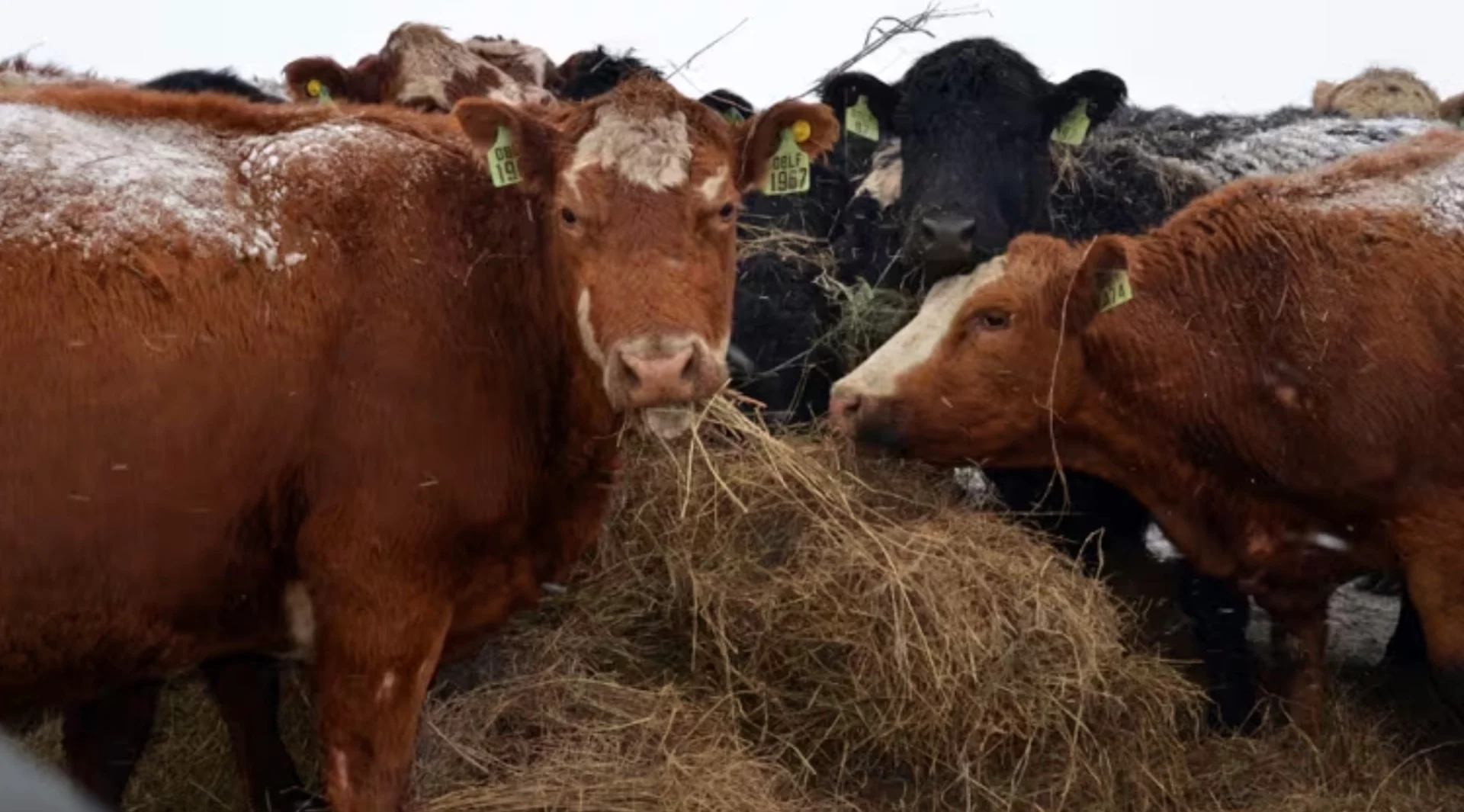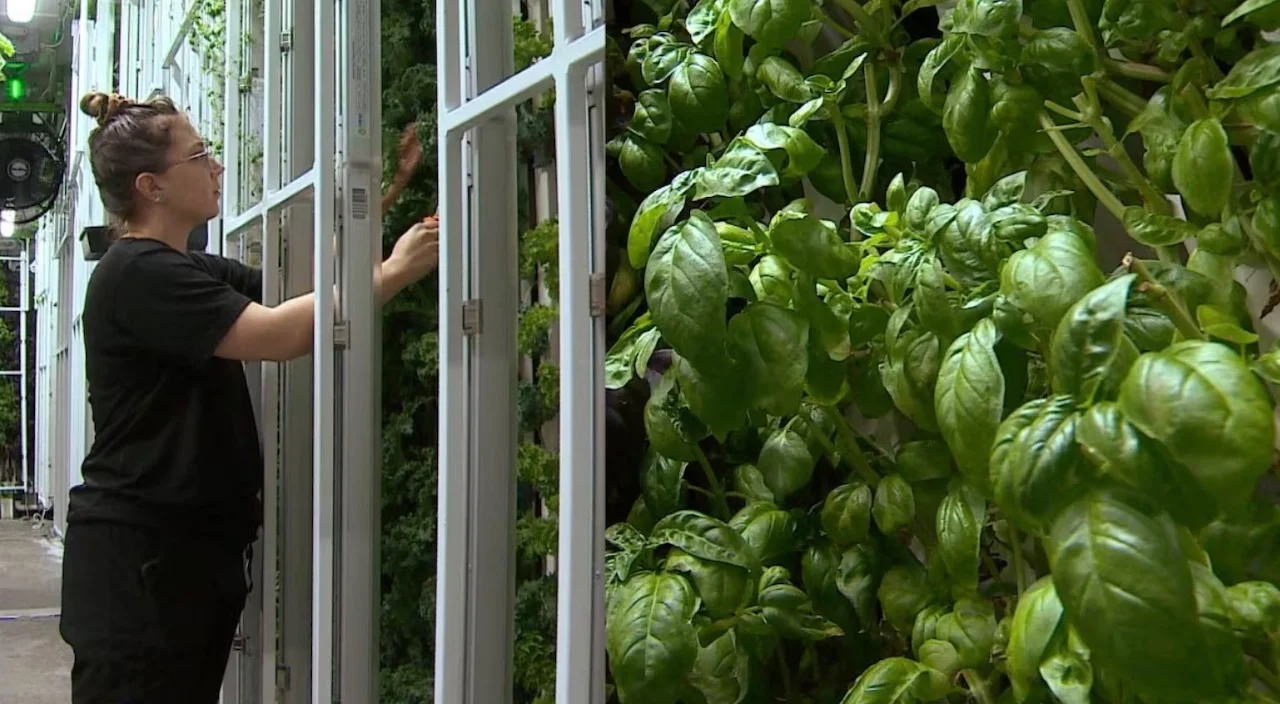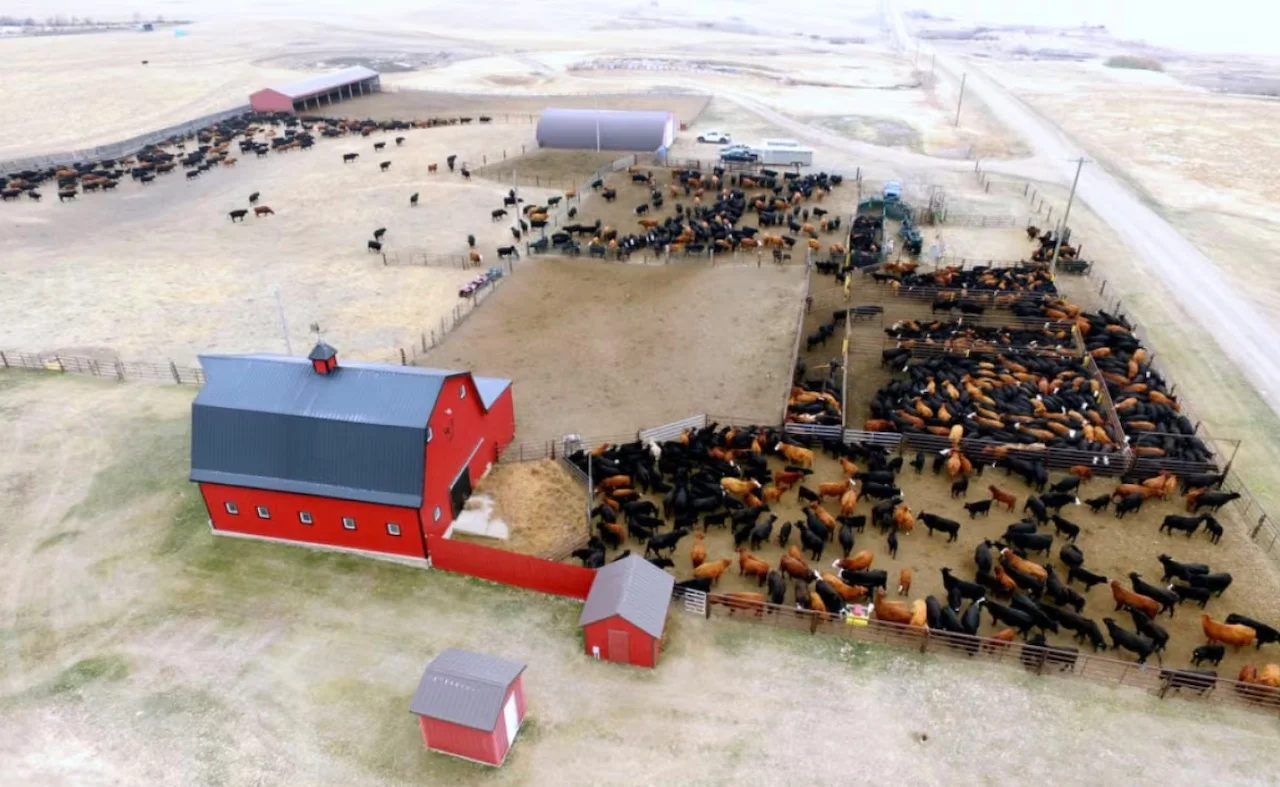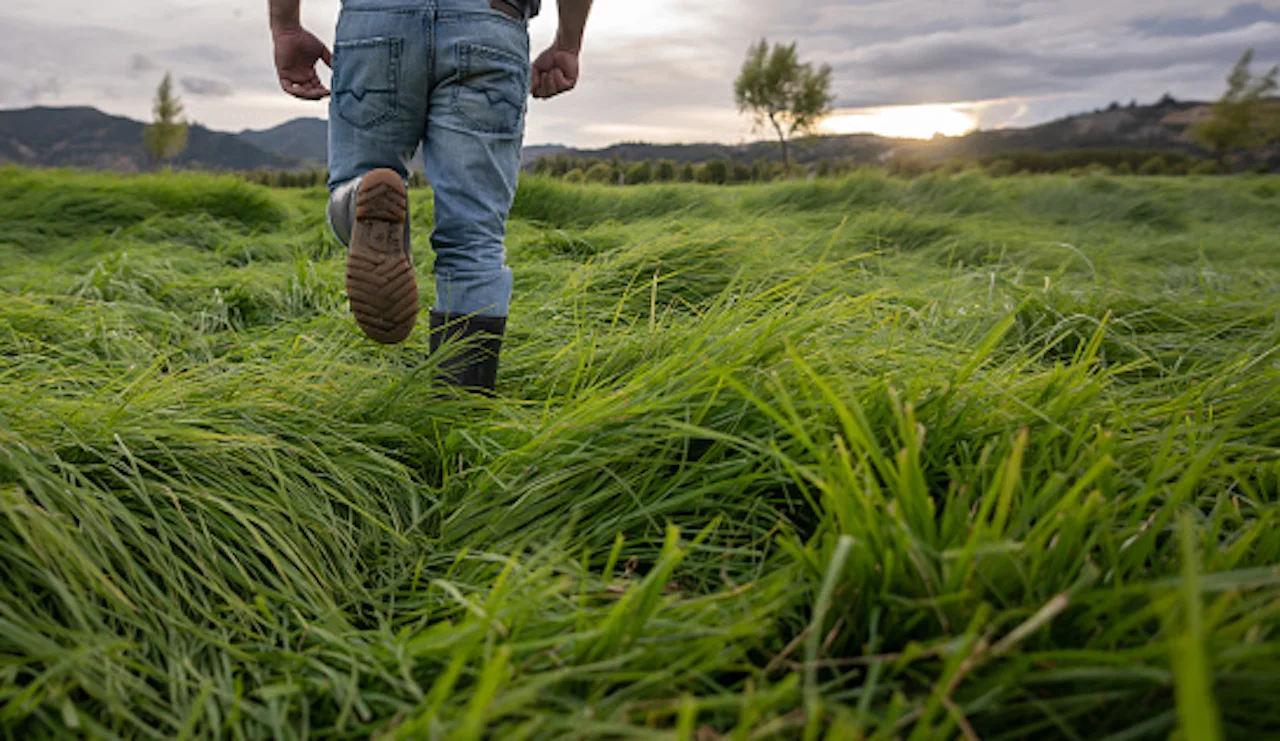
How growing cattle feed indoors could help ranchers keep herds during drought
An indoor vertical farming company in Alberta is branching out into a new agriculture initiative: feeding hungry cattle.
For the past few years, NuLeaf Farms has been growing leafy greens and herbs in its southeast Calgary warehouse. Now the company is working with ranchers to set up the technology to grow feed.
The system uses way less water than traditional methods, which is important as Alberta continues to experience severe drought.
DON'T MISS: How regenerative farming could help Canada meet its new emission targets
"Everything's become more expensive for farmers these days. Land, equipment and drought really exacerbated this," said Carlos Santos, the vice-president of business development and sustainability initiatives at NuLeaf Farms.
"So we did a bunch of research on fast growing grains and developed a system that could produce quite a significant amount of feed out of small space at a price that's lower than the price of feed these days."
He says the systems can scale from small solutions to supporting large feed operations.

NuLeaf Farms is turning over a new leaf. The indoor vertical farming company is known for growing leafy greens and herbs in a Calgary warehouse, but the ongoing drought led to partnering with ranchers to use the technology for cattle feed. (Monty Kruger/CBC)
Sustainable access to feed can help maintain herds
Craig Ference is one of the ranchers looking to try out a feeder unit for 250 cows. In the past couple of years, his family's farm had to get creative to feed their herd due to a lack of grass with the drought, changing their model from summer grazing to forged rations in large paddocks.
"We knew we needed to bring technology in and figure out a better way to change our model … to sustain our cowherd and stay in the industry," he said.
Double F Farms, located 280 kilometres northeast of Calgary, has been in his family for generations. Ference says they want it to remain that way.
He says the carbon tax coupled with increasing land and fuel prices are already a burden on their bottom line, and bringing in feed from afar can get pricey.

Double F Farms is setting up their fodder system in a Quonset east of the red barn in the above photo. Their main feedlot is located in east central Alberta near Kirriemuir. (doubleffarms.ca)
"Feed prices vary substantially, depending on quality, and type of feed source," said Ference. "Fodder is cost competitive and available at all times, so during droughts when feed shortages occur, there will be available supply at a consistent price year to year. That is where the true savings come into play. We will have feed when we require it the most."
He says they plan to blend the barley fodder with other byproducts to ensure proper nutrition, proteins and energy.
WATCH: Alberta announces $125M program to protect from drought and flood
How the process works
The hydroponic system has been optimized to run with a small energy demand, and can run year-round. Seed is put into trays in a rack-based system that germinate within a week, and can then be fed to cattle or added to other more traditional cattle feed.
"There's varying levels of automation depending on the size of the system and the needs of the farmers," said Santos.
He says a small system — essentially the size of a retrofitted shed or small barn — can produce the equivalent of hundreds of acres of grazing land with a fraction of the water requirements.
They are also researching different crop types that can reduce the amount of methane released by cows after a hearty meal.
"The interest from farmers has actually been really positive. Like farmers also see an opportunity to reduce the land and water requirements to reduce risk and they understand their business really well," said Santos.

Farm grass. (Getty Images/andresr-1318878043-170667a)
"So they also see that there's systems that can produce in a way that's financially beneficial to the farmer. So there's a lot of interest. We have several ongoing projects that we're in discussions about as well along with the couple that we're delivering now."
Drought's impact on beef prices
Nathan Phinney, president of the Canadian Cattle Association, says his industry is always looking at new technologies to implement.
He says another year of drought means beef prices are likely to rise again this summer. The lack of water means it's too expensive to feed herds, so many ranchers are downsizing.
Meanwhile, demand for Canadian beef is growing across the globe.
"We're starting to see a very strong demand on replacement cattle and feeder cattle. So I think, you know, we could see potentially maybe another record high for numbers as far as price goes," he told CBC News.
WATCH: A drier spring forecast raises concerns for droughts and wildfires
Thumbnail courtesy of doubleffarms.ca via CBC.
The story was originally written by Rachel Maclean and published for CBC News.